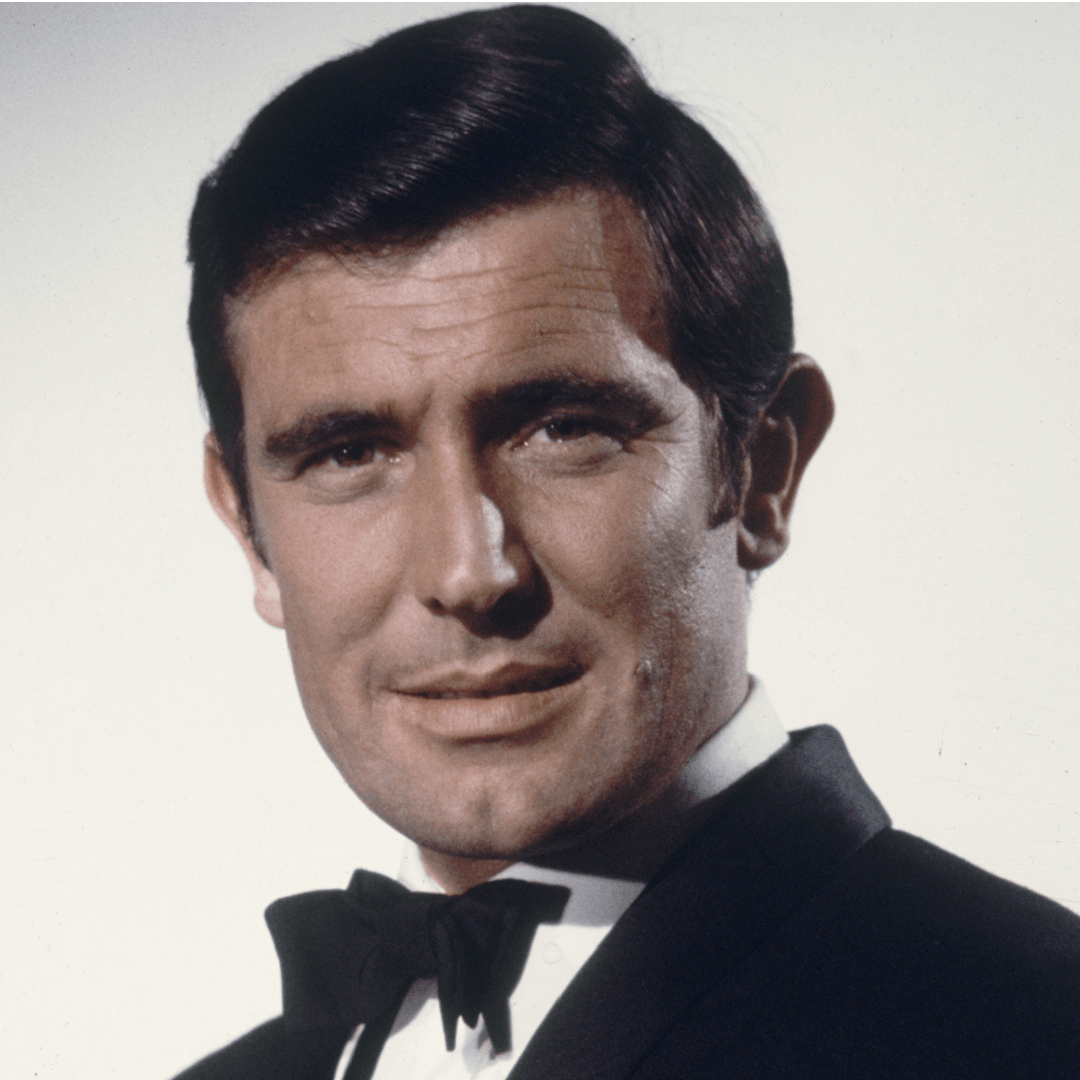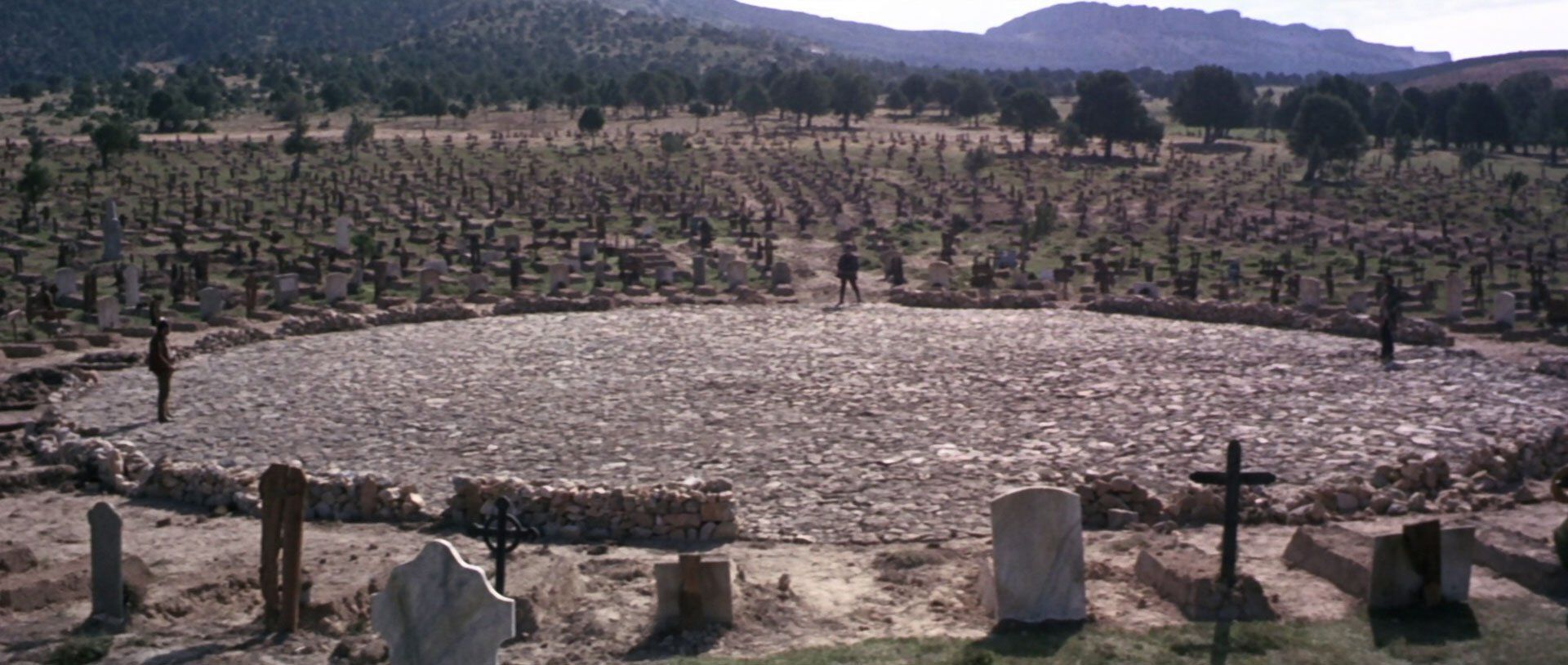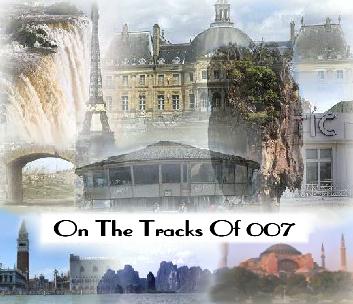The Hong Kong Connection
Or: When Ian Fleming's James Bond meets Bruce Lee's Hong Kong.
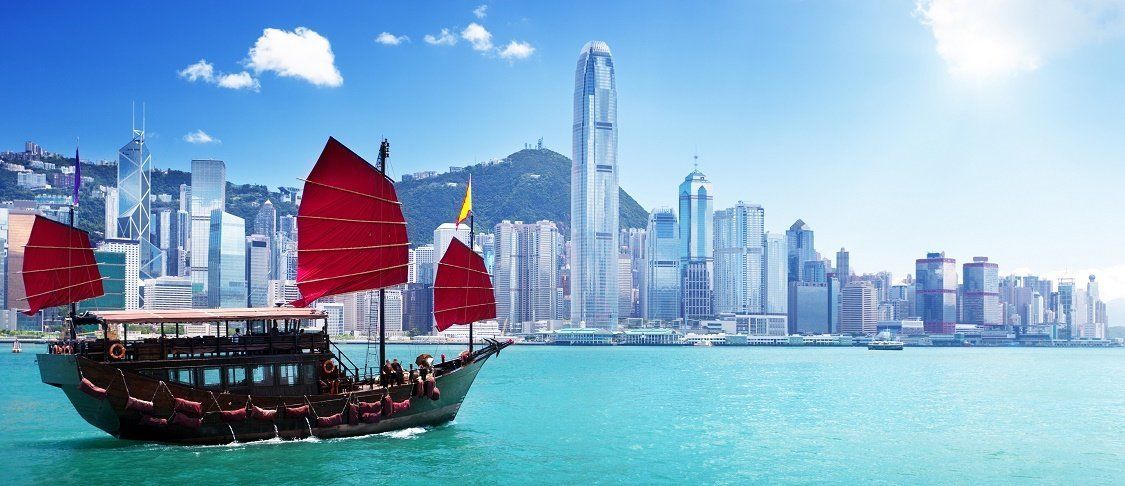
History
The island of Hong Kong was occupied by the British Empire in 1842. In 1856 Britain acquired the Kowloon peninsula on the Chinese mainland. The Crown Colony of Hong Kong was completed by the lease of the New Territories from China in 1898. This lease was supposed to last for 99 years. In 1984 the governments of Great Britain and the People’s Republic of China made an agreement that the British rule over Hong Kong would expire on June 30, 1997. Since July 1, 1997 it has been a ‘Special Administrative Region of China’. For the normal visitor and tourist very little, if anything at all, has 'really' changed since then. The British Governor was replaced by a Chinese appointed head of administration, but capitalism still rules and the cars still drive on the left hand side of the street. Only you will get some different stamps in your passport. The urban beehive of Hong Kong is a bonanza of fascinating sights and experiences and only few destinations yield their treasures so readily like this unique place at the verge of the Middle Kingdom.
Highlights of a visit to Hong Kong would be for example an ascent of Victoria Peak (by funicular railway) from where you have a spectacular view of the whole area, or a meal in the ‘Floating Restaurants’ at Aberdeen (Pierce Brosnan in the TV-series ‘Noble House’) or a trip to the outlying island of Lantau with the world’s largest outdoor Buddha-statue. The most popular novel dealing with Hong Kong is definitely ‘The World of Suzie Wong’ by Richard Mason. Although the action takes place in the Wanchai District, most parts of the film (1960), starring William Holden and Nancy Kwan, were shot in the area around the Man Mo Temple at the crossing of Ladder Street and Hollywood Road in the Sheung Wan District.Fleming's journey
When Ian Fleming embarked on a commisioned tour around the world in 1959 to write stories for his Thrilling Cities book, his first stop was Hong Kong & Macao. After being toured around for three days by his friend Richard Hughes, who was the Australian correspondent for The Sunday Times, Fleming moved on to Tokyo, adding yet another story to his epic adventure. He described Hong Kong as the most vivid and exciting city he had ever experienced.
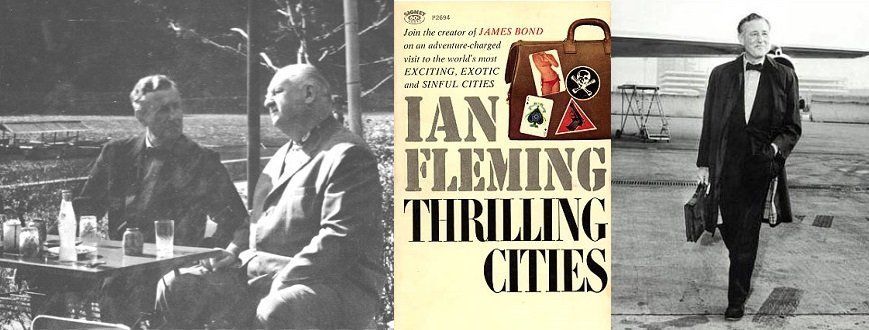
In Ian Fleming's novels, James Bond never visited Hong Kong, but in the films he visited the city three times. The first time was in 1967 in You Only Live Twice
's pre-title sequence, where we witness Bond (Sean Connery) being killed in a fold-up bed. While this exciting scene was obviously filmed at Pinewood Studios, the arrival of the police cars in the busy Hong Kong Streets was filmed on location. It was filmed at Shan Tung Street, around the point where it crosses Nathan Road in Kowloon, which is the main land part of Hong Kong. It will probably not come as a surprise when I tell you that 50 years of urban planning has made this location totally unusable for old-new comparison shots..
In Causeway Bay
on Hong Kong Island, you can find the Royal Hong Kong Yacht Club. From the
club’s terrace the brief scene in which an enemy agent
watches Bond’s funeral at sea was filmed. The footage of the sea funeral itself was in fact filmed on
board HMS Tenby
off coast Gibraltar.
The 70's kung fu era
But there are other connections as well. When George Lazenby stepped away from the James Bond role, after making On Her Majesty's Secret Service in 1969, he had a very hard time finding an acting job. This was mostly due to everyone around him proclaiming he was 'difficult to work with'. So, like Fleming, he travelled around the world for a while and eventually ended up in Hong Kong, the heart of the Asian kung fu industry. Here Lazenby was recognised as James Bond, while no one seemed to know about the negative air that hung around him in Europe and the USA. Lazenby got the feeling he should be able to find work here, so he tried to get in touch with the biggest star in this part of the world at the time.. Bruce Lee.
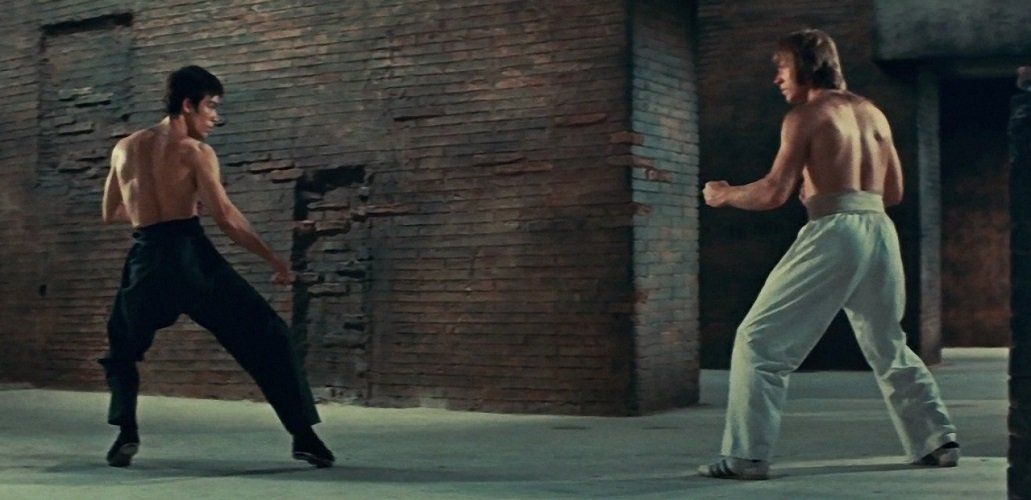
After having reached megastar-status with his
first two films, The Big Boss
and Fist of Fury
, both for Golden Harvest Studios, Lee had teamed up with GH producer Raymond Chow to form Concorde
, a
production company that would set new standards in Asian cinema. Carefully watching
how films were made in Hollywood
and impressed by the Bond films, Lee filmed his next blockbuster Way of the Dragon
partially in a, for Asians, very exotic setting, Europe.
The Rome Coliseum fight between Lee and six times karate world champion Chuck Norris (actually filmed in a hot studio in Hong Kong) is a feast for the eye and still stands today as the
best choreographed fight ever captured on film.
When Hollywood noticed Lee's Asian success, they interrupted his work on his latest project Game of Death
by offering him a chance to become a worldwide star. Warner Brothers produced Enter the
Dragon
, a James Bond-like film tailored to fit Lee, shot completely in Hong
Kong, in which Lee stars alongside American stars like John Saxon and Jim Kelly. When Enter the Dragon
was still in post-production, Raymond Chow heard the news
that ex-James Bond star George Lazenby was in town and tried to set up a
meeting.
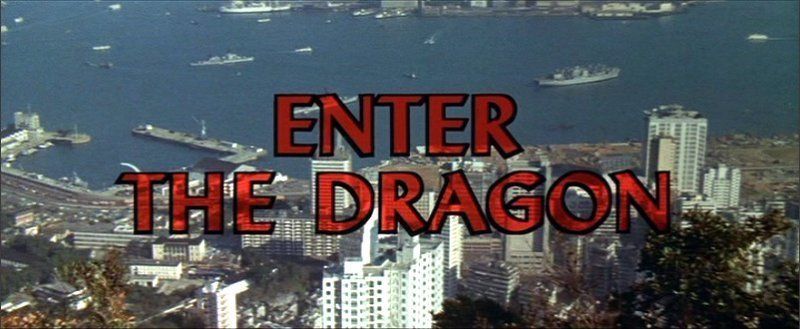
In an interview Lazenby gave in 2000 to HK Cinema expert Bey Logan, he explains: "I was so flat broke at the time, I had to take the bus from the Hyatt Hotel to Golden Harvest Studios. It took me about three hours! When I finally got there, I met Raymond, and Raymond called Bruce, who was in the editing rooms, and Raymond said “Look, I’ve got George Lazenby here. Come and meet him”. And Bruce was like I’m not interested…
"
Lazenby continues: "The first time I really met Bruce (..) we were going to have lunch. His car pulled up and in the back seat were Bruce and the reigning Mr Hong Kong (Bolo Yeung), and in the front were Bruce's wife Linda and his secretary. Bruce said “ Get in the car
,” I say “ But there’s no room
”, so the secretary gets out, and I get in. I think she’s going to get into Raymond Chow’s car behind us, but she gets back in on my lap!. Then off we go (.. )
When we were in the car, Bruce was talking away about his Philosophy, and so on, and he talked about the fact that there would never be peace in the world until we got rid of different religions, because different religions caused chaos, and I said “ That’s not you, that’s Krishnmurti
”. He was surprised I knew Krishnmurti and even more impressed that I'd actually been to visit Krishmurti in India. After that we were like brothers."

"We hadn’t booked at the restaurant, so they had to wheel out this big round table, so we could have lunch. Now, Bruce could tell that I was broke, so he turns to Raymond Chow and says “ Give George (U.S) $10,000" and Raymond goes “ What! Why? ”. Bruce goes “ We’re going to make a film with him, ” and Raymond goes “ What film? ”. Bruce goes " never mind what film. Just write the cheque. " I later found that Raymond Chow had a 49.9 percent share in the (Concord) company, and Bruce had a 51.1 percent share, so Bruce was calling the shots. Raymond wrote the cheque. After lunch, the typhoon warning had been taken down, and Bruce took me to the HK Shanghai Bank to cash the cheque, then took me to his tailor and had they fit me for a suit, which they made the same day.."
Side note: At this point, it might be smart to inform those of you who are not familiair with George and his story telling, that his stories are usually rather exaggerated and often composed of different versions he'd been telling people over the years. His true closeness to Lee can not be easily confirmed nor denied, simply because everyone involved is no longer alive, except for the storyteller himself.. The 49.9 / 51.1 share devision George mentions here for instance also seems highly unlikely. Most other sources state a normal 50/50 partnership between Lee and Chow.
"I was going to be in Game Of Death , and then, the way he talked about it, we were going to be in a whole string of pictures together. He told me that id be playing good guys, and that He’d never kill me off in his films. He’d call me at three in the morning, and say “ What about this idea? ”, and id be half asleep going “ What…?! ”. In the morning I couldn't remember a word he’d said!. He told me not to worry that I'd never studied martial arts, he’d teach me."
Then, on July 20, 1973, the unimaginable happened. Bruce Lee died, before any of their great plans could materialise. While Lazenby and Chow were waiting for Lee at the Miramar Hotel restaurant in Kowloon, the latter had been given a pill against the headache that had bugged him all day. He lay down for a while, but never woke up, leaving Hong Kong and the rest of Asia in deep mourning. The official autopsy report stated "death by misadventure": An allergic reaction to a combination of pain killers had caused Lee's Brain to swell, causing his death.
For Lazenby, timing couldn't have been worse as his collaboration with Lee almost certainly would have made him a huge star in Asia. Lazenby: "After Bruce died, I thought 'that was that'. Then I got a call from Raymond Chow saying “ Look, you’ve got $10,000 of my money"
(paid as a deposit for Lazenby's participation in Game Of Death
, remember?). He wanted me to make three films for Golden Harvest. I said: " I don’t know any of this Kung Fu
", but he told me it wasn’t a problem..". And thus started Lazenby's active involvement with the Hong Kong film industry.

Stoner (1974) was the first film he made with Golden Harvest, from an idea that was developed during the making of Enter the Dragon. It was meant to be a (sort of) sequel to Enter the Dragon , only bigger, with a bigger budget and bigger stars. The original title was The Shrine of Ultimate Bliss , and the movie was supposed to star both Bruce Lee and Japanese star Sonny Chiba. Expectations were literally sky high. Enter the Dragon had grossed over $100 million worldwide and Shrine (Stoner) was expected to double or even triple this result. Warner Bros would co-produce and give the film a world wide release and a $10 million marketing budget.
After Lee's death, Warner Bros dropped out and so did Sonny Chiba, because he thought it didn’t make sense to make the movie without Lee. Lazenby was brought onto the project by Golden Harvest and Angela Mao Ying and Sammo Hung were now presented as co-stars.The film nevertheless did quite well on the local market and turned Lazenby (who played the main character Joseph Stoner) into a minor star within the genre, even though it was barely released outside Hong Kong.

in 1975 Lazenby co-starred with Shanghai-born actor Jimmy Wang Yu in The Man From Hong Kong. This exciting, action packed film about drugs smuggling was known in the U.S. as The Dragon Flies and was partly filmed on location in Australia. While obviously below the Hollywood level of film making, the Golden Harvest productions were in fact top notch in Asia. In the genre, these films were very well received. Financially The Man From Hong Kong did pretty good as well. US rights were sold for $200,000 and at Cannes the film sold around the world for a minimum of $500,000 , putting it in profit even before it had been released.

The last film Lazenby made for Golden Harvest was A Queen's Ransom (1976), known as The International Assassin in the rest of the world. In short, the film revolves around IRA man George (played by Lazenby) who plans to assassinate Queen Elisabeth II when she visits Hong Kong. Eventhough the film features a very good fight between Lazenby and his co-star Angela Mao, A Queen's ransom is clearly the weakest of Lazenby's Golden Harvest films and it left all parties involved a little disillusioned. Shortly after, Lazenby went back to Australia, without becoming the "great white hope" of the martial arts genre Raymond Chow apparently envisioned him to be.
Financially, the deal with Golden Harvest had been pretty good for the former James Bond. Lazenby had been paid $10,000 US per week for his acting, plus $1,000 US per week for expenses for a total of $11,000 US per week for each of his three Golden Harvest films. Each film covered about 20 weeks worth of work, so by the time he returned to Oz, Lazenby had earned $220,000 US per film. Only Bruce Lee had commanded more in Hong Kong, earning $12,500 per week. In the three years following Lee's death, Lazenby had been the highest paid actor in Hong Kong.
Three nipples and a Golden Gun
The second time James Bond fans could see their hero visit Hong Kong in the cinemas was in
1974, when it was still an undoubted outpost of the British Crown in East Asia. In The Man With The Golden Gun
007 first goes to Macau,
which belonged to Portugal
from 1557 till 1999. Since then it has been, like its bigger brother Hong Kong, a ‘Special Administrative Region of China’.
He arrives at
the Casino de Macau
or the ‘Floating
Casino’, which is located on a permanently moored floating barge in the Inner Harbour.
007’s spectacular means of transportation to Hong Kong
is a hydrofoil (or jetfoil). It
needs about an hour for the ride and it is a thrilling vehicle for an outing to
Macau. On its way it passes the wreck of the
cruise liner Queen Elizabeth, which mysteriously caught fire and rolled over in
Hong Kong harbour in 1972. In the meantime
since 1974, this weird Bond location has been removed. The hydrofoil reaches Hong Kong at the Macau
Ferry Pier in the Sheung Wan
District.
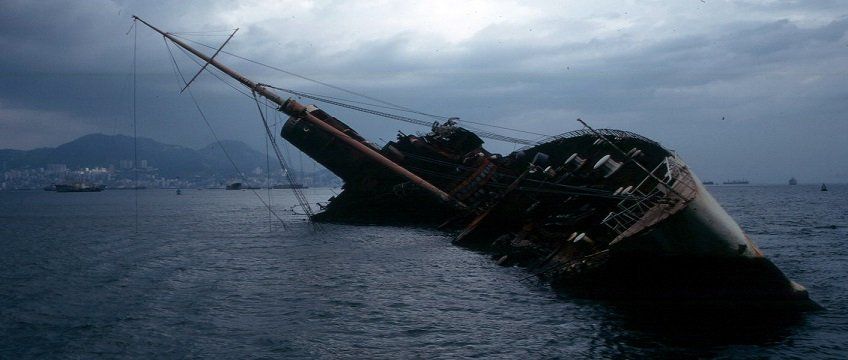
All the way from Macau, Bond follows the beautiful Andrea Anders, who is picked up at the pier by a Rolls Royce. 007’s Hong Kong-liaison Mary Goodnight informs him that this car belongs to the fleet of road cruisers of the luxurious Peninsula Hotel. The ‘Peninsula’, one of Hong Kong’s oldest and finest hotels is situated at Salisbury Road, in the very heart of Kowloon ’s shopping, business and entertainment district. Its guests can hire a chauffeur-driven Rolls Royce - one of them a vintage car from 1934 - for a sight seeing tour.
Only a few hundred yards to the north, at Hankow Road 14, is the former location of the Bottoms-Up-nightclub, where Bond witnesses the assassination of the solar energy expert Gibson. Being Hong Kong’s first topless bar (established in 1971) it was popular with women as well as men. Four circular bars with individual music were connected by mirrors and topless barmaids used to sit in the centre of these round bars on very large swivel stools (and they revealed a bit more than in the film). Furnished with a plush decor the atmosphere was very cosy to say the least. For years, the billboards at the entrance referred to the fact that the club had been a film location in The Man with the Golden Gun . In 2004 the club moved permanently to Fenwick Street in Wan Chai on the Hong Kong Island side, where it reopened as a sports bar. Unfortunately the club closed its doors for good in July 2009.
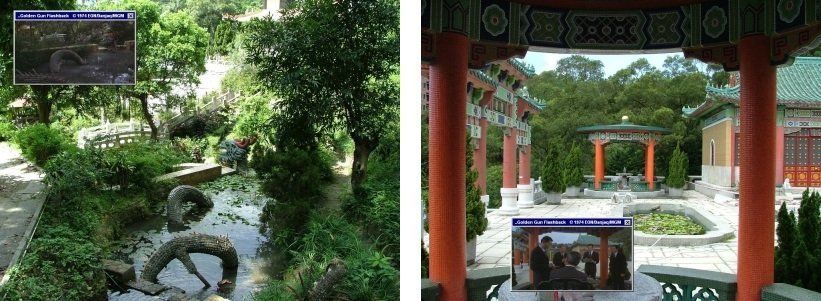
One of the best Bond locations, in my opinion, is Dragon Garden, which served as Hi Fat's estate. While the beautiful walled estate is Thai in the film, it's actually situated along Castle Peak Road, in the western part of Tsuen
Wan
, in the New
Territories. This former
barren hillside was turned into a classical Chinese garden by Hong
Kong businessman Lee Iu Cheung, in the 60's. He called his garden Lung-Po
, or Dragon Garden
.
Designed by renowned Chinese architect Chu Pin, who was involved in the restoration of the Forbidden City in Beijing, the garden is covered with hundreds of species of trees and flowers, as well as ponds, footpaths, bridges and architecture of the Song, Ming and Ching dynasties. Mid 2006, the garden was saved at the eleventh hour from being sold to a developer, mainly thanks to the efforts of Cynthia Lee, Grand Daughter of Lee Iu Cheung, who managed to convince her family and the Hong Kong Government of the historical importance of this cultural heritage. Cynthia even established the Dragon Garden Charitable Trust in July 2006 for the purpose of saving cultural heritage in Hong Kong.
John Barry's Game of Death
In a funny twist of faith, composer John Barry enters the story in 1978. After having completed his score for The Man With The Golden Gun , in a time when Brittish tax laws made many high grossing artists leave the country for good, to avoid having to pay up to 99% income tax, Barry moved to California. He eventually got officially accused of tax evasion and couldn't return to (or work in) the UK for years because of this. It also was the reason Marvin Hamlish scored the follow up Bond film and Barry had a hard time finding interesting projects to work on.
In the meantime in Hong Kong, plans had materialised to complete the film Bruce Lee had been working on after Way of the Dragon . It was originally supposed to be Lee's way of showing the world his ideas, his vision and his unique self-developed fighting style, Jeet Kune Do. The film's plot originally revolved around a lone fighter who ends up at a pagoda, where he has to fight his way to the top, battling different styles of fighters on each floor. The original concept was very good and by the time he died in 1973, Lee had already filmed three of the planned five floors (or fights) at Golden Harvest Studios. The 100 minutes of raw footage had been shelved since his death and by 1978 Golden Harvest had made a serious attempt to finish the film.
Unfortunately for all involved, the only thing that came out of this idea was an artistic disaster. Only 11 minutes of Lee's original footage was incorporated in a totally new plot, which dealt with Chinese actor Billy Lo, who has trouble with local mobsters. He fakes his own death, so he can deal with the gang. The film was completed without any of the original actors, mostly because they all refused. The main character (Lee's role) was played by two different look-a-like actors and old footage from Lee's earlier films was inserted to match the new actors with Lee's footage of the pagoda floor fights. The most dreadful scene is one in Billy Lo's dressing room, about five minutes into the film. We see one of the stand-in actors filmed from behind while he faces a mirror. It then cuts to a cardboard image of Bruce's face in the mirror. While I write this, I suddenly realise how funny it is that they seriously thought they could get away with that sort of cheap crap..

The end result was a shameful attempt to cash in on the Bruce Lee craze, five years after his death. Even Chuck Norris was credited as starring in the film, eventhough his involvement was nothing more than a minute of footage from his coliseum fight with Lee from Way of the Dragon . The film did well at the box office, but it left many very disappointed. There was a lot of criticism about the way the film makers handled Lee's legacy and people were furious about the incorporation of footage of Lee's actual funeral. It was tasteless expoitation by Golden Harvest and very well described by an IMDB reviewer: " Game of Death is the equivalent of having your dog swallow a gold ring - you've got to sift through the crap to find the polished stuff. "
The film does indeed have some polished stuff . Of course there is 11 minutes of footage of Bruce Lee's originally filmed fights with Ji Han-jae (as 4th floor guardian), his student and long time friend Dan Inosanto (3rd floor guardian) and basketball star and student Kareem Abdul-Jabbar as the top floor guardian ( The remaining fight footage was only rediscovered in the Golden Harvest vaults in 1999!). Another highlight is the stunning opening title credits by John Christopher Strong the Third. Clearly inspired by Maurice Binder's work on the Bond films, its a visual spectacle of gambling sequences combined with scenes from Lee's earlier films. It gives the film a very classy feel from the start.
For the soundtrack, Bond veteran John Barry was approached. As said, Barry hadn't been able to find many interesting projects while outside the UK, and this wasn't really his cup of tea either. In an attempt to politely get away from the project he demanded an unusual, over the top fee. To his great surprise, Golden Harvest agreed and Barry had a job. The soundtrack he delivered for the film is the last highlight I can mention for this film. The haunting instrumental themesong definitely has that James Bond - Barry quality we all know so well and it brings back memories of the instrumental theme he composed for Lazenby's On Her Majesty's Secret Service
. It features a very recognizable combination of notes, that made me realise that it is highly likely that Barry already had this piece of music shelved for future Bond use. I don't think it was written specifically for Game of Death
. Now, he suddenly had this project that he really didn't care too much for and decided to use that piece of music he had written in (let's say) 1975. Of course there's no way to tell for sure, but this theme has Bond written all over it.
Anyway, give it a listen and be your own judge..
Conclusion and reflection
Does the Hong Kong connection end there? No, actually not.Hong Kong nearly made it as the main subject of a Bond film, when a script was developed about the British colony being handed back to China in July 1997. In the end the subject was dropped and that film became Tomorrow Never Dies
.The plot did however make it into Raymond Benson's James Bond novel Zero minus ten
. And it was not the first time Hong Kong featured in a continuation novel. About one third of John Gardner's No deals, Mr Bond
takes place in Hong Kong.
In 2002 EON tried to spice up the Bond films with
exotic locations again. One of them was a ‘return to Hong Kong’
in Die Another Day
. Without actually
spending a second there, director Lee Tamahori fools us with a background projection of
the colourfully lit skyline of Hong
Kong Island,
in front of which we can see James Bond (Pierce Brosnan) emerge from Victoria Harbour
just to visit his usual hotel, this time dressed in rags..
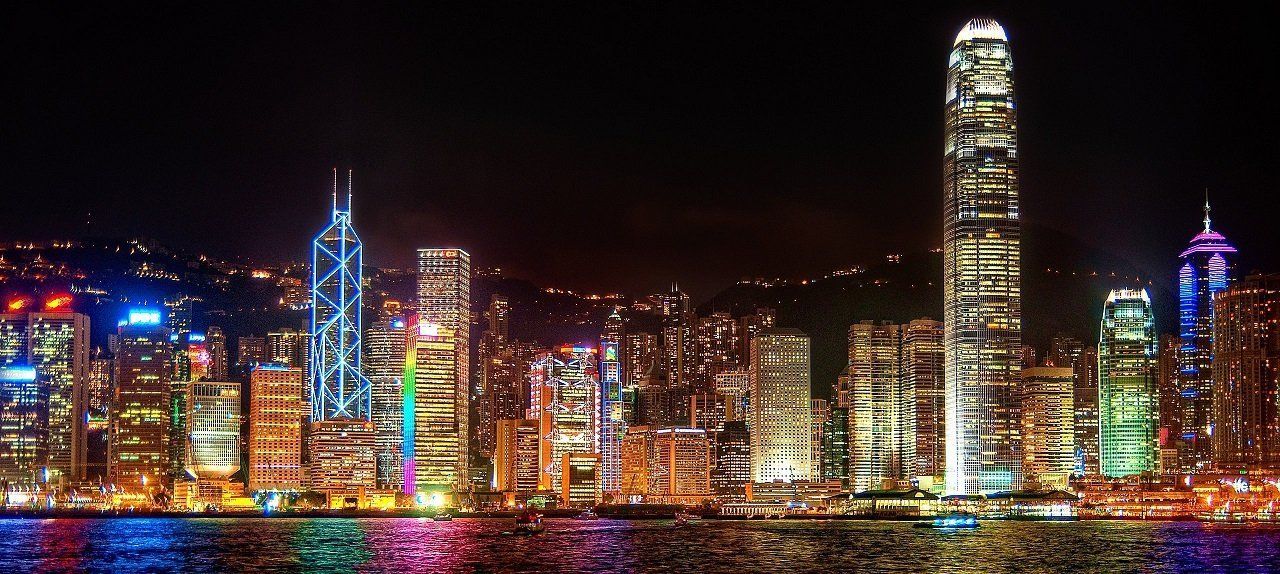
Hong Kong still is a very interesting place to visit. It was already like that in the late 50's when Fleming arrived and it was even more fun in the 70's when vitually every caucasian looking visitor was approached for parts in kung fu flicks. Some of Bruce Lee's toughest looking opponents in Way of the Dragon
turned out to be backpackers, who just happened to be around town. So I can only encourage you to visit Hong Kong.
Who knows in which film you'll end up..
To end with a funny note, let me share with you the translation of the official titles given to the James Bond films on their release in Hong Kong:
- Dr. No - James Bond Bravely Destroyed the Mysterious Island
- From Russia with Love - James Bond Bravely Destroyed the Web of Spy
- Goldfinger - James Bond Versus Goldfinger
- Thunderball - James Bond Bravely Versus SPECTRE
- You Only Live Twice - James Bond Bravely Destroyed the Rocket Hill
- On Her Majesty's Secret Service - James Bond Bravely Destroyed the Snow Mountain Castle
- Diamonds are Forever - James Bond Bravely Destroyed the Diamond Gang
- Live and Let Die - James Bond Bravely Destroyed the Black Evil Gang
- The Man with the Golden Gun - James Bond Versus the Golden Gunner
- The Spy Who Loved Me - James Bond Bravely Destroyed the Underwater City
- Moonraker - James Bond Bravely Destroyed the Space City
- For Your Eyes Only - James Bond Bravely Destroyed the Sea Dragon Gang
- Octopussy - James Bond Bravely Destroyed the Bomb Gang
- A View to a Kill - James Bond Bravely Versus the Mad Man
- The Living Daylights - James Bond Versus the Dragon of Spy
- Licence to Kill - James Bond Bravely Versus the Mad Killer
- Goldeneye - New James Bond and Goldeneye
- Tomorrow Never Dies - New James Bond and the Empire of Tomorrow
- The World is Not Enough - New James Bond and the Black Day Crisis
- Die Another Day - New James Bond and the Coming Killing
- Casino Royale - New James Bond Wisely Defeated the Royal Casino
- Quantum of Solace - New James Bond and the Killing of Quantum
- Skyfall - New James Bond: Wisely Defeated the Ominous Sky City
- SPECTRE - 007: the Empire of the Ghost Shadow
Source and additional material: Martijn Mulder for On The Tracks of 007
For more info on traveling to Hong Kong, visit our dedicated page on the website
For more info on staying at the mentioned Peninsula Hotel, please visit the hotel's page on our website
